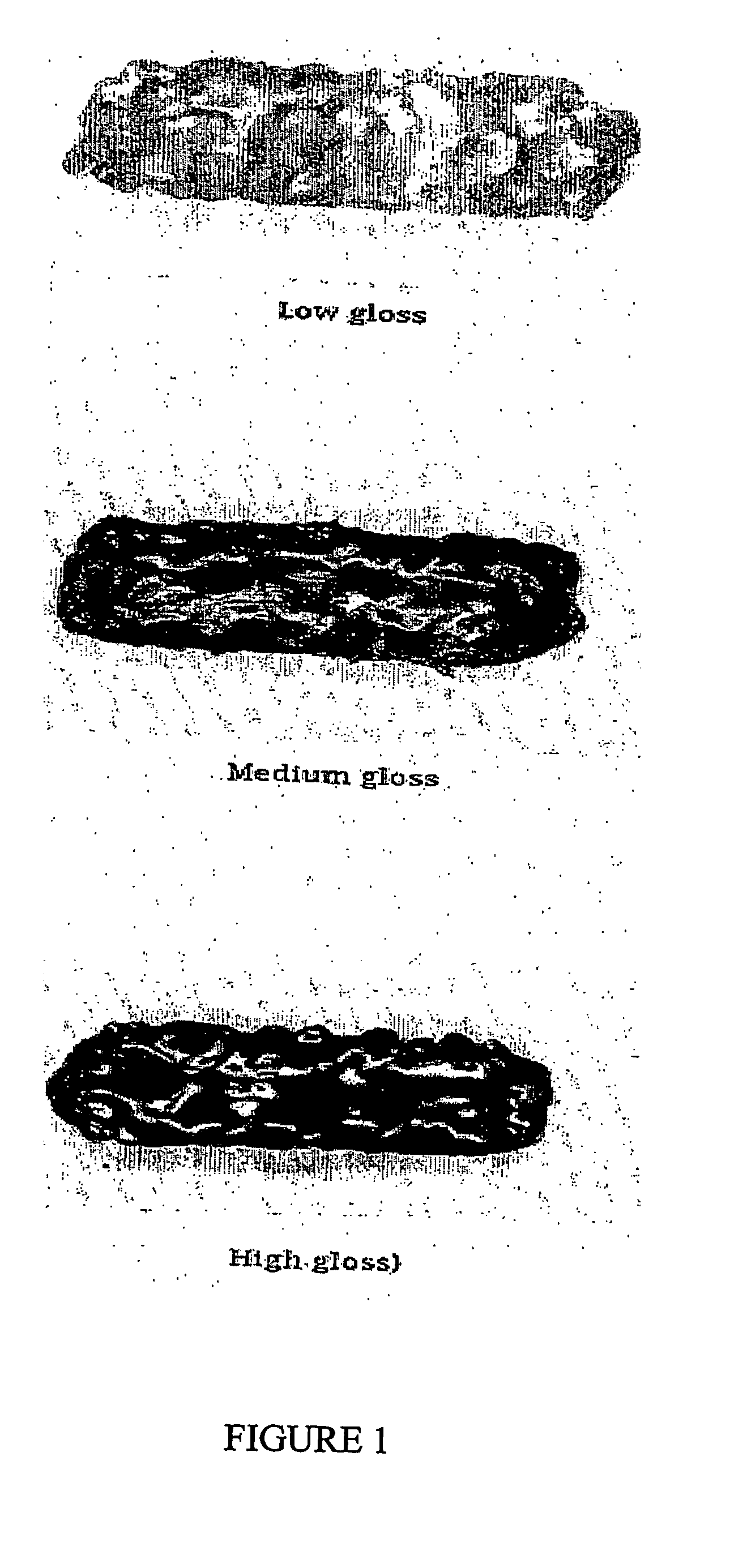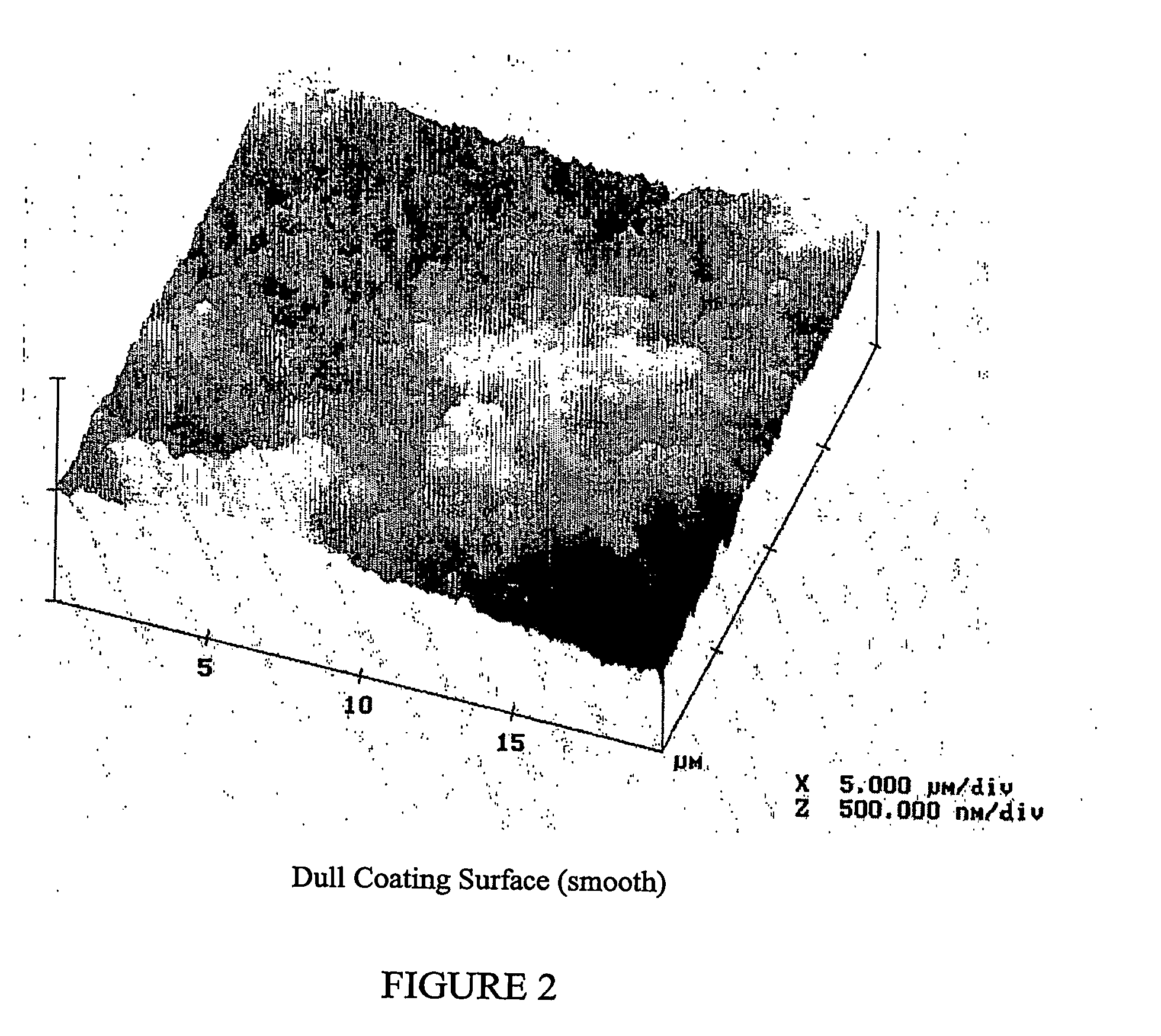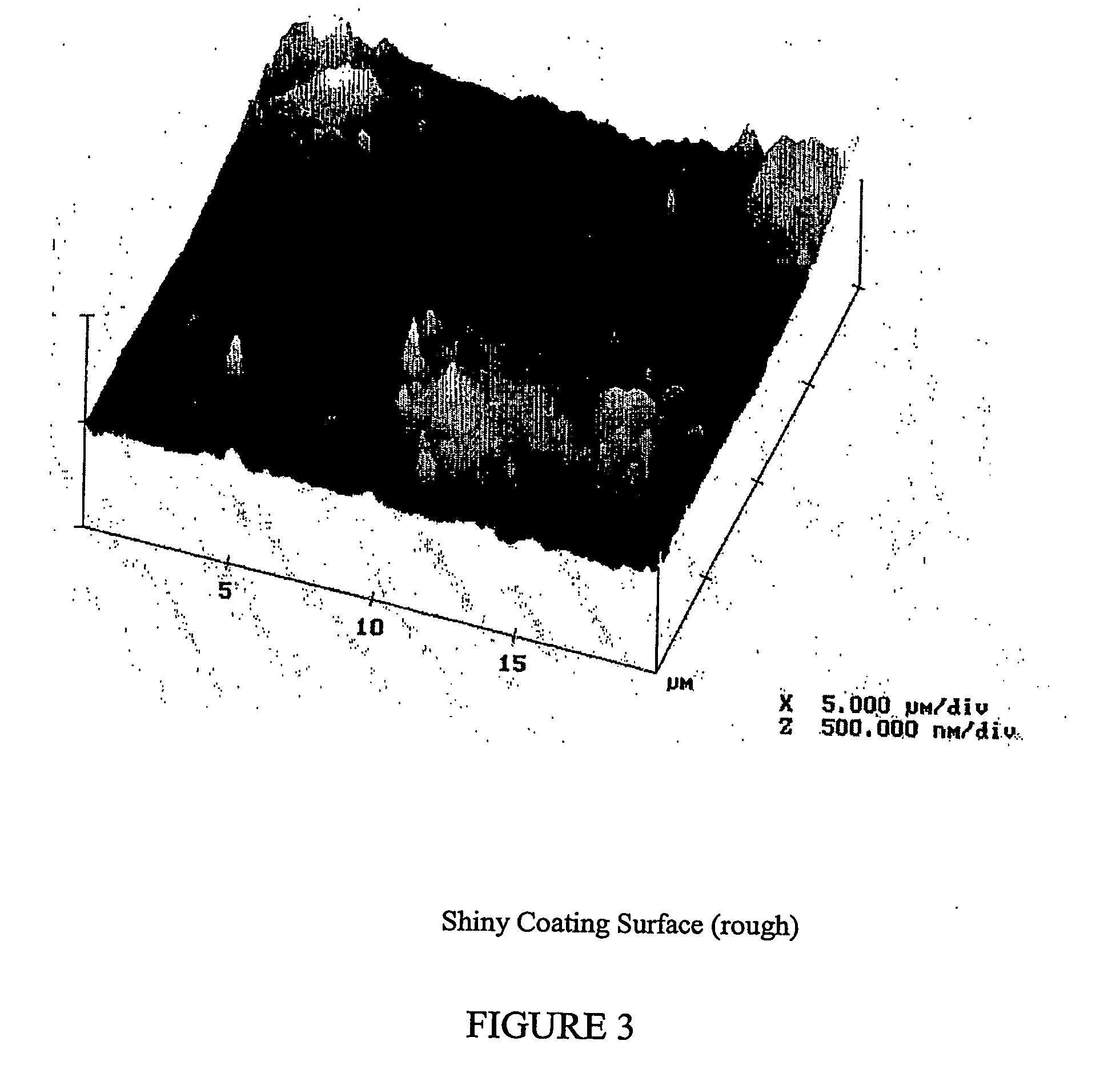Reduced-fat flavored coating and methods of using same
a technology of reduced fat and flavored coatings, which is applied in the direction of application, food ingredients as gelling agents, sweetmeats, etc., can solve the problems of chocolate losing the mechanical strength, chocolate becoming sticky or even runny, and semi-liquid mass that can often only be eaten
- Summary
- Abstract
- Description
- Claims
- Application Information
AI Technical Summary
Problems solved by technology
Method used
Image
Examples
example 1
Lubricity According to the Invention
[0040] Microspheres of alginate gel were prepared by spraying an aqueous solution of high guluronic acid sodium alginate (0.6% by weight) into a bath of aqueous solution of calcium chloride (5% by weight). (A SS spraying system with nozzle reference number 1 / 4J8C was used.) The size of the beads could be controlled by adjusting the pressure and it was found to be advantageous to add lecithin (0.2% by weight) to the calcium chloride bath to minimize surface tension effects during the formation of the gel microspheres. The size of the beads was measured using a Malvern particle size analyzer. It was found optimal to prepare a blend of 1 micron and 5 micron microspheres in approximately equal proportions.
[0041] Chocolate chips were prepared using a reduced quantity of cocoa butter and the alginate microspheres as a fat mimetic. These chocolate chips were baked into cookies. The optimum appearance and sensorial appeal was obtained by reducing the fa...
example 2
Gloss According to the Invention
[0043] A glossy appearance is an important and desired characteristic of conventional chocolate, so much so that a dull appearance is often viewed as a quality negative. Glossy appearance is another aspect of chocolate conferred by its fat content. “Gloss” is a function of surface topography. The surface topography of a variety of materials with dull or shiny surfaces was studied using a Dimension 3000 Scanning Probe Microscope (SPM) in tapping mode. The SPM images revealed that a high gloss surface typically has a high roughness index but at the same time has many parabolic depressions or concavities that act as reflectors of incident light, as shown in FIG. 1. (This effect is termed the “sequin phenomenon”.) In contrast, for dull surfaces, SPM images typically revealed a low roughness index but many convex protrusions that randomly scatter incident light (FIGS. 2 and 3).
[0044] An explanation for this observation comes from the paint industry. Glos...
example 3
Mouthfeel Control According to the Invention
[0045] The appealing texture of conventional chocolate depends on the fact that the fat melts in the mouth. All six polymorphs of cocoa butter (Table 1) melt below body temperature (37° C.). This change of state from solid to liquid is highly desirable during mastication. It aids in generating a controlled flavor release. It also aids in the generation of mouthfeel and in liquefying the mass for easy swallowing.
[0046] Three stages of mouthfeel were identified and measured by a sensory panel:
[0047] 1) The loss of the feeling of solids.
[0048] 2) The onset of the feeling of velvetiness.
[0049] 3) The disappearance of the sensation of the coating on the tongue.
[0050] Samples were evaluated for each of these three stages using a standardized mastication procedure of one closure of the teeth per second and using a cube-shaped portion of 5 grams weight. Standard errors were determined based on 30 timings per subject using standard material: ...
PUM
 Login to View More
Login to View More Abstract
Description
Claims
Application Information
 Login to View More
Login to View More - R&D
- Intellectual Property
- Life Sciences
- Materials
- Tech Scout
- Unparalleled Data Quality
- Higher Quality Content
- 60% Fewer Hallucinations
Browse by: Latest US Patents, China's latest patents, Technical Efficacy Thesaurus, Application Domain, Technology Topic, Popular Technical Reports.
© 2025 PatSnap. All rights reserved.Legal|Privacy policy|Modern Slavery Act Transparency Statement|Sitemap|About US| Contact US: help@patsnap.com



